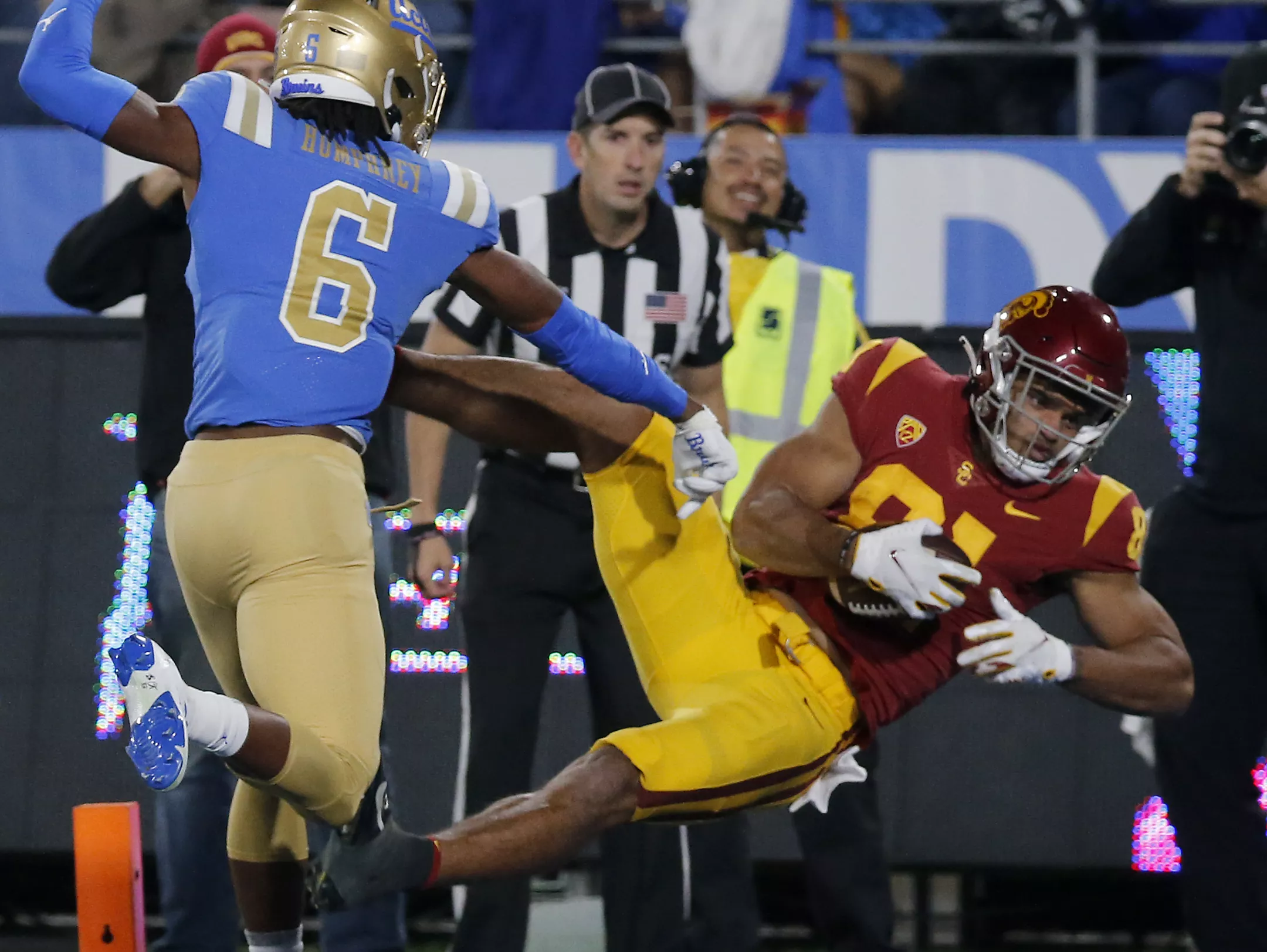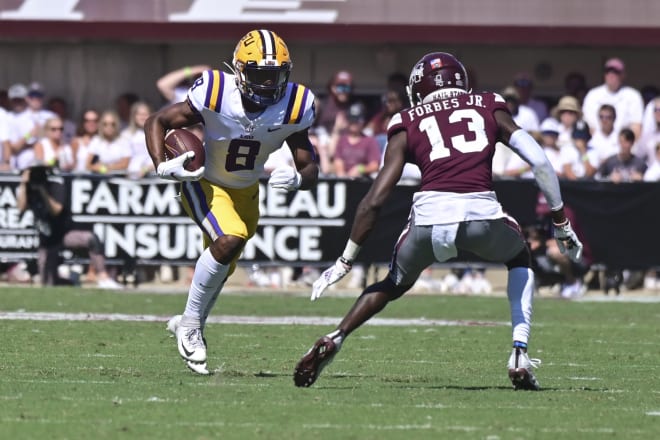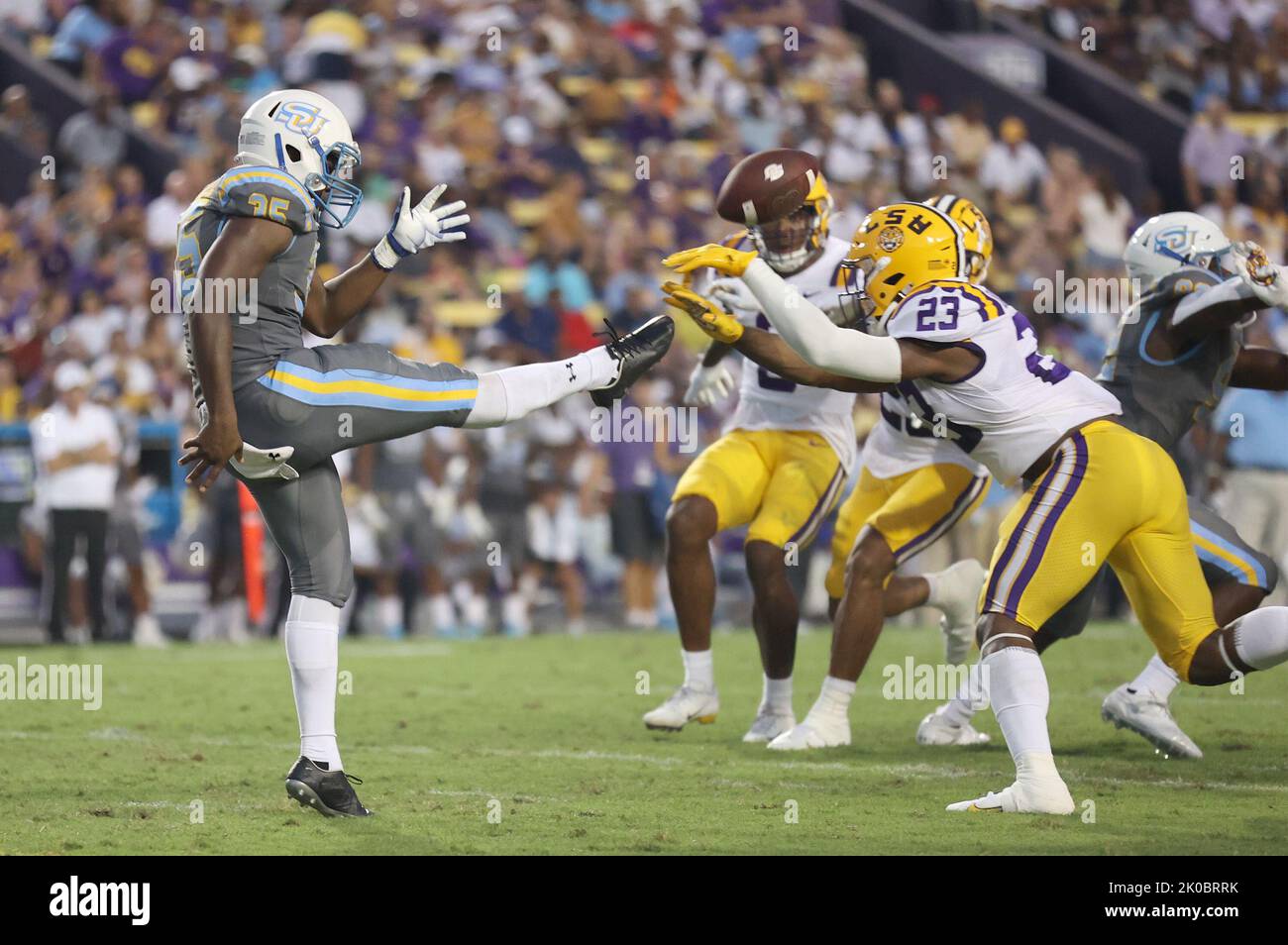CFP Reaction
I ended up agreeing with the committee regarding the top 5. I’ll be really surprised if two of the current top 4 lose this weekend. I had said before last week that I thought Ohio St. would be one of the stronger non-champions were they to lose to Michigan.
Neither Tennessee nor Alabama, who each have two losses, had a non-conference game that was worth very much to compensate for the extra loss. The SEC is better, but it’s not so much better that you don’t need either a very good non-conference game or a ninth conference game.
I did think that LSU would have deserved consideration if they had finished with 2 losses, but the Tigers did get the ninth conference game when they qualified for the SEC Championship Game. This would have given LSU a second win over a team who finished with a winning record in conference.
Anyway, as to who #6 should be, I disagree with those who have Tennessee behind Alabama. Tennessee not only played the #1 team in the country by virtue of playing in the SEC East, but they also beat both of the top teams in the SEC West. Alabama didn’t beat anyone in the top 6 (there are 7 teams per division) of the SEC East, and they also didn’t beat the only team with a winning conference record (LSU) in the SEC West. The Tide did lose two games in the last second, but I think beating more good teams should count for more than how close the losses were. Alabama didn’t have to beat a team like either team who beat Tennessee. Texas was a better non-conference opponent than Pitt, but that doesn’t make up for Alabama playing Vanderbilt as the extra cross-divisional opponent while Tennessee drew LSU, not to mention Georgia and South Carolina.
Ratings and Other Thoughts
I don’t think this technicality matters as far as Playoff arguments but something else that annoys me is if you lose a tiebreaker for the conference championship game, you’re still considered a divisional co-champion. Even though LSU lost after clinching the spot in the championship game, Alabama can now claim they’ve won the SEC West 10 of 11 years (the exception being 2019). I prefer the NFL approach. If you lose the tiebreaker to the team that advances as the winner of the division, you’re not called a champion or co-champion. The previous time the Tide lost it outright was also to LSU, in 2011. Since divisions will cease to exist in about two years, I hope we can get at least one more outright win in the next two years.
Back to my rankings/ratings, you may have noticed the “weighted rank” doesn’t penalize as much for losses anymore. I’ve compensated for that by making it a smaller component of the overall total, but it still does take record into consideration to some extent. For instance, Vanderbilt had to play four of the five best teams by conference record in the SEC and is only #39 in the weighted rankings because the Commodores also have 7 losses. Alabama only played two of those teams and is #15 in the weighted rankings largely because there were no other losses.
So, although when I first introduced the weighted rankings they were meant to stand alone, in no universe did I think LSU was #1 last week or that Oregon St. is #2 this week (after Georgia); but those are the teams (other than Georgia) most deserving of bonus points if you will given a combination of a good record and quality opponents. I also think it’s right that Clemson lost an extra spot (from what they are in the original unweighted formula) because their weighted rank fell to #24. Clemson just barely edged out LSU and Oregon St.
One might come to the conclusion that I don’t give conferences other than the SEC enough of a chance with the weighted component, but there are five Pac-12 teams in the weighted top 10 and only three SEC teams. All things being equal, LSU and Tennessee having such tough conference slates would have caused them to finish lower than Alabama in the standings, but they both beat the Tide and ended up with the same number of conference losses as the Tide.
USC was the only one of those five Pac-12 teams to have a better weighted rank than unweighted rank. This was because the other four all finished with three overall losses. It also helped that the Trojans played Notre Dame. This compensated somewhat for USC not having played Washington and Oregon.
The other teams in the top 10 of the weighted rankings are Texas and Michigan. Michigan is doing well being that they only played two teams in the top 40 in my overall ratings, but of course being undefeated helps. Texas has the opposite situation: a number of top-40 opponents (4) but also a number of losses (4). Texas has also played 5 teams that finished between numbers 41 and 65 with only one opponent (ULM) below #85.
There are only a couple of the lower teams I thought needed a little bit of explanation beyond the results of last week.
It really hurt Florida St. that Clemson and LSU lost because those games were largely responsible for the Seminoles’ having an unweighted ranking of 14 and a weighted ranking of 16 last week. Notre Dame’s loss to USC also had some collateral effect upon the ACC as a whole as well given that the Irish beat both of the ACC title contestants and another team (Syracuse) who went .500 in conference and finished 7-5 going into the bowl game.
The only other team who seems somewhat out of place is Boise St. The win over Utah St. wasn’t the most impressive (although to be fair, the Aggies had won 5 of 6 going into the game), but the three teams who had beaten the Broncos all had “good” weeks. The Broncos’ worst loss, UTEP, is still not a good team; but the Miners improved their strength of schedule considerably by playing UTSA. You probably know what happened with Oregon St. (who beat Boise St. in Week 1) and why their stock improved. Also, BYU improved its strength of schedule with the win over Stanford (who played in a good conference and somehow beat Notre Dame…. Best wishes to departing head coach David Shaw, by the way. How he made it so long is beyond me).

I also noticed there were some games that weren’t included the last time or two I had updated the weighted rankings, so that may have played some role in why Florida St. fell after a loss and why Boise St. rose so far after a win over a now-6-loss opponent. I think that’s also the main reason UCLA fell so much last week and rose so much this week. Without correctly factoring in how good USC was, it made the loss to the Trojans look worse than it should have; and this is now corrected.
Regardless, I like the process I’ve followed this year because it’s been a lot more stable. I don’t like to say a given team is top 10 one week and not in the top 25 the next or that six or seven teams are in this week’s top 25 but weren’t in last week’s. We don’t really find out that much about a team in one game, especially not when it’s 1 of 12 games, so I don’t like to see much volatility later in the year even if there are some adjustments in the methodology.
Top 25
| Rank | Team | Last |
| 1 | Georgia | 1 |
| 2 | Michigan | 4 |
| 3 | Texas Christian | 3 |
| 4 | USC | 7 |
| 5 | Ohio St. | 2 |
| 6 | Tennessee | 8 |
| 7 | Alabama | 9 |
| 8 | Penn St. | 10 |
| 9 | Clemson | 5 |
| 10 | LSU | 6 |
| 11 | Oregon St. | 16 |
| 12 | Texas | 18 |
| 13 | Oregon | 11 |
| 14 | Utah | 12 |
| 15 | Kansas St. | 21 |
| 16 | UCLA | 23 |
| 17 | Tulane | 20 |
| 18 | Florida St. | 13 |
| 19 | Boise St. | — |
| 20 | Washington | 24 |
| 21 | Notre Dame | 15 |
| 22 | Troy | 14 |
| 23 | S Carolina | — |
| 24 | Mississippi St. | — |
| 25 | TX San Antonio | 22 |
| — | N Carolina | 17 |
| — | Ole Miss | 19 |
| — | Coastal Caroliina | 25 |
For the detailed ratings of all 131 teams, see here or follow the link in the heading for “Knights Ratings” at any time while browsing the site.



/cloudfront-us-east-1.images.arcpublishing.com/pmn/366AA4FKXLHSGWRJNFXL54LHGM.jpg)













Alabama, College Football, Duke, Florida, Georgia, Iowa, James Madison, Louisville, LSU, North Carolina, Notre Dame, Oregon, Oregon St., Penn St., Pitt, SEC, Tennesee, Texas, UCLA, USC, Utah, Washington, Washington St.
Week 7 Top 25 2023
In College Football, Post-game, Rankings, Rankings Commentary on October 18, 2023 at 5:18 PMI’m still moving toward my completely objective top 25; but if you just want to know what the computer says, go here. Last week, it was less than 1/3 objective. Today, it’s roughly half. The initial list I made was 60% objective, but I still allowed myself to move teams by up to 5 spots after that. The only exception was Ohio St., whom I moved six spots. There is a good chance the Buckeyes will be near #1 on their own merit next week anyway (if they beat Penn St. of course).
This might be the last week I can have Georgia ahead of all the one-loss teams though. Texas has the #3 schedule, and Georgia has one of the worst in FBS. Adding a bye week doesn’t help. The Bulldogs have a gauntlet after that (three games against ranked teams, one on the road, and two other good teams away from home), so they’re not pulling the wool over anyone’s eyes to get back to the Playoff; but this is meant to be a snapshot. They should not be in the top four or even the top eight if the season ended now. Not only was Vanderbilt a weak opponent, but all of the Bulldogs’ best three opponents so far (Kentucky, South Carolina, and Auburn) lost to teams the Bulldogs have not yet played or will not play.
Just like last week though, most teams did not move more than a couple of spots from the improvised formula. There may still be some volatility in the coming weeks because for many teams next week’s result will still make up 1/6 of their FBS opponents, so it counts for about twice as much as a game does at the end of the year. Also, I’m going to continue to give myself less power to smooth out any transitions up or down the rankings.
The top 9 should make a lot of sense based on last week.
Iowa is exactly where the formula put them. If Penn St. loses, the Hawkeyes may fall a spot or two, but I think this is fair for right now. North Carolina is undefeated and has played a significantly better schedule than Georgia has, so I thought that spot was good for them.
Louisville followed up on the win over Notre Dame with a loss to Pitt, so this allowed LSU to move ahead of the Irish despite having a much less impressive win. The only loss by either of the two teams who beat LSU was to Alabama, so LSU’s two losses look much more excusable right now. Pitt already had four losses and had no FBS wins going into last week. They had a significant drop-off from last season. Former Pitt (and USC) quarterback Kedon Slovis going to BYU didn’t seem to do either side any good.
Oregon is still a good team despite the setback in Seattle. Their loss is similarly excusable to LSU’s losses, but there just isn’t a quality win like LSU and Notre Dame have. Missouri also only has one loss, but obviously I think hosting LSU is a step down from traveling to Washington right now.
Five of the remaining nine teams in my top 25 are in the Pac-12. It took me a while to sort them. I think it’s easier to explain in reverse order. Despite two losses in a row, Washington St. deserved to stay ranked because they beat Wisconsin, the team I would otherwise have put #25. Colorado St. isn’t bad for a second-best out-of-conference win either.
I don’t know why Wazzu lost to Arizona so badly, but margin of victory (or loss in this case) isn’t a big concern for me going forward. The week before, the Cougars lost to UCLA, so I put the Bruins higher. Oregon St. beat UCLA, and I think they only ended up losing to Washington St. because the game was in Pullman. Also, it’s a singular loss. The Beavers also beat Utah, so I think putting them between Washington St. and Utah made sense.
USC lost, but it was out of conference to Notre Dame, so I don’t have a problem with leaving the Trojans ahead of Oregon St., UCLA, and Washington St. You could argue about Utah, but it helps that the Utes beat Florida, whom I have #32 right now. Baylor isn’t having the best season, but going to Waco is still a strong second-best out-of-conference game. I don’t think USC has beaten anyone nearly as good as Florida. The Utes are 1-1 against the rest of the top 25 (win over UCLA, loss to Oregon St… another reason the Beavers are ahead of the Bruins), which is of course better than 0-1.
I squeezed Duke ahead of USC because they played Notre Dame closer and also because Clemson is creeping their way back toward the top 25 like Florida is.
I wasn’t blown away by the fact that Tennessee beat Texas A&M at home, but I like the way that they were able to grind out a low-scoring win and never seemed panicky or particularly at risk of losing. There were times last year when the Volunteers were out of their element when a defense was able to slow them down. I’m seeing some maturity and consistency that I’m not seeing from teams that are lower; and I mentioned Florida vis-a-vis Utah, so I’m more forgiving of that loss than the combinations of two losses below or the singular loss to Pitt.
I moved James Madison as far down as I could, so I don’t think the Dukes would beat the Volunteers on a neutral field right now; but this is a normal consequence of the computer formula. I could be wrong though. I would have sworn all last year that Tulane wouldn’t have beaten USC on a neutral field, for instance. I have Tulane #31, by the way, between the five honorable mentions and Florida. Kansas St. is right after Florida, which explains in part why Missouri is still as high as they are. Kentucky isn’t a bad #2 win for a one-loss team either.
Top 25
Honorable mention: Liberty, Air Force, Wisconsin, Troy, Clemson